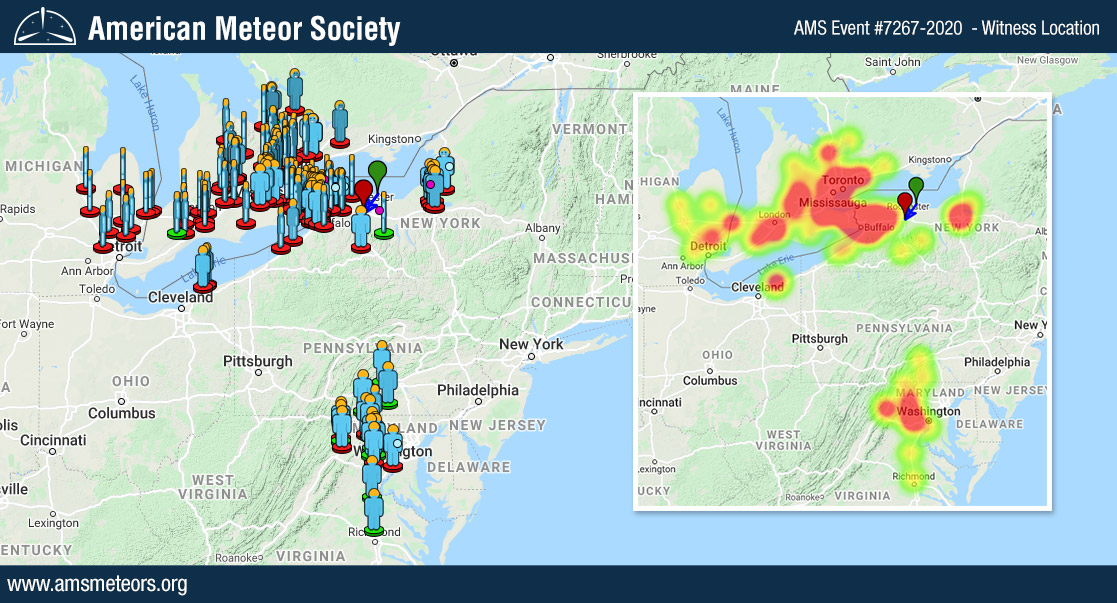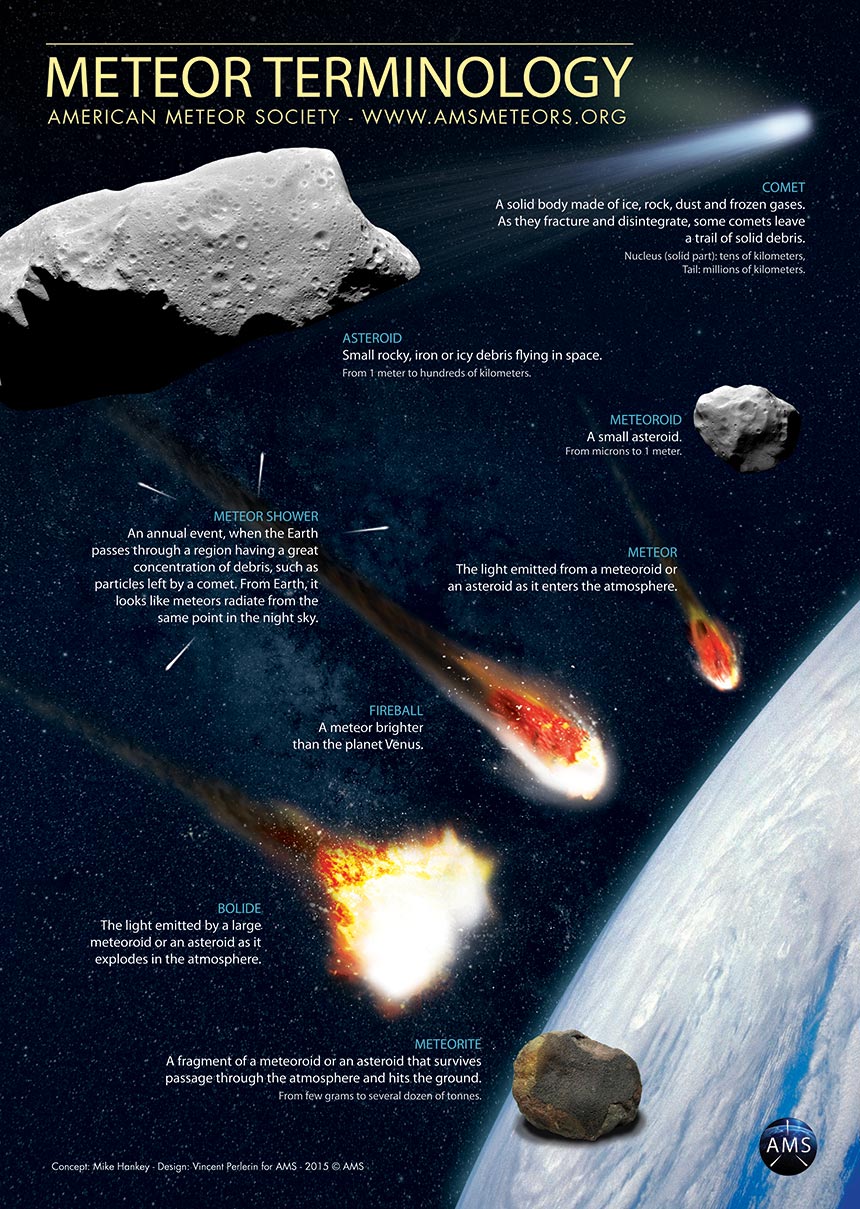More than 150 reports from 7 states
The AMS received more than 150 reports so far about a daylight fireball event that occurred over New York on December 2nd, 2020 around 12:08pm EST (17:08 Universal Time). The AMS #2020-7267 event was mainly seen from the New York and Ontario but we also received reports from Maryland, Michigan, Ohio, Pennsylvania and Virginia.
If you witnessed this event and/or if you have a video or a photo of this event, please
Submit an Official Fireball Report
If you want to learn more about Fireballs: read our Fireball FAQ.

Loud Boom, trajectory and videos
Dozen of people contacted local media area about a loud boom heard at the time of the event in central New York. When a very bright fireball penetrates to the stratosphere, below an altitude of about 30 miles (50 km), and explodes as a bolide, there is a chance that sonic booms may be heard on the ground below. NASA analysis of the event shown that the parent meteoroid at the origin of the event entered Earth’s atmosphere over upper New York, between Rochester and Syracuse. Traveling westward at 56,000 miles per hour (90,000 km/h), it broke into pieces at an altitude of approximately 22 miles (35 km), producing a bright flash reported by the public and caught in videos.
The bolide was detected by the Geostationary Lightning Mapper onboard the GOES 16 weather satellite. The ground track of the event computed by NASA shows that the fireball was travelling from North East to South West and ended its visible flight somewhere over the Cayuga Lake, NY.

Sed Dog enthousiast Bekka Gunner was lucky enough to catch the event on camera while dog sledding in Royalton, near the Erie, Genesee border:
Fireball, Bolide?
Several thousand meteors of fireball magnitude occur in the Earth’s atmosphere each day. The vast majority of these, however, occur over the oceans and uninhabited regions, and a good many are masked by daylight. Those that occur at night also stand little chance of being detected due to the relatively low numbers of persons out to notice them.
Additionally, the brighter the fireball, the more rare is the event. As a general thumb rule, there are only about 1/3 as many fireballs present for each successively brighter magnitude class, following an exponential decrease. Experienced observers can expect to see only about 1 fireball of magnitude -6 or better for every 200 hours of meteor observing, while a fireball of magnitude -4 can be expected about once every 20 hours or so.
